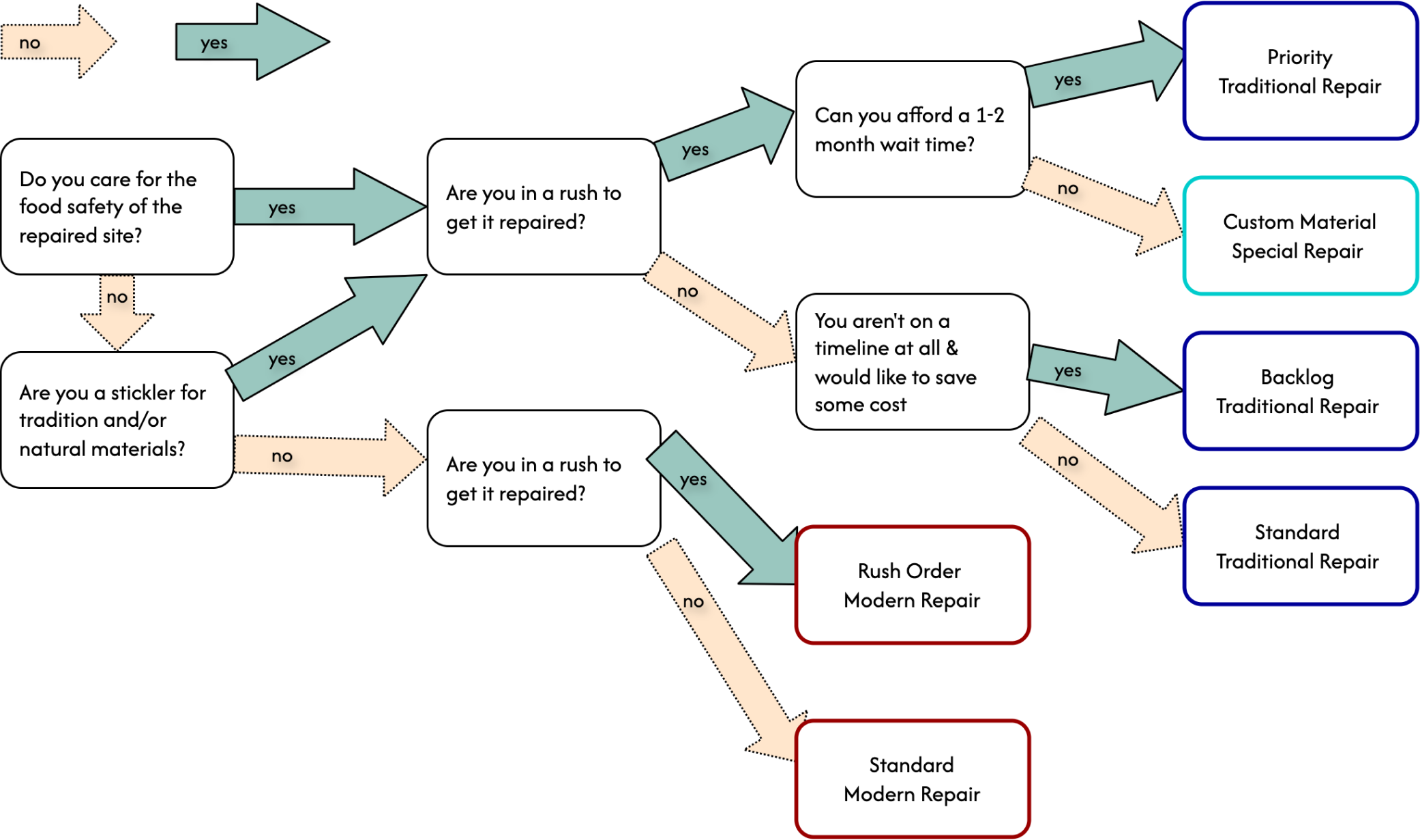Repair Process Explained
So you have a broken piece of beloved ceramic-ware and you've vowed to not give up and make it return to life with added character. Kintsugi is a great choice - let me walk you through the available repair processes so you can choose the best repair fit for your piece!

Modern Epoxy Repair
ntsugi follows the westernized kintsugi method created by an Italian ceramic-artifact restoration specialist who also studied kintsugi in Japan. This method iterates through similar steps from the traditional Japanese kintsugi repair process but with completely western materials such as epoxy, plaster of Paris, sealant and varnish.
Traditional Urushi Repair
As authentic and traditional as it could get - ntsugi uses natural, kintsugi repair materials sourced from Japan. Urushi lacquer is the main material for mending/filling the cracks and chips. Urushi takes longer to cure in dry environments (but longer this process takes, stronger the bond) so this method will take time to complete.
Why Does Kintsugi Take SO Long?
Timeline for the kintsugi repair seems to take forever but why? It's not too bad for the modern method but 2-3 months for the traditional method?? Here's a quick breakdown of what's happening in each step of the kintsugi repair.
* Kintsugi timeline flowchart under construction but coming shortly!! *